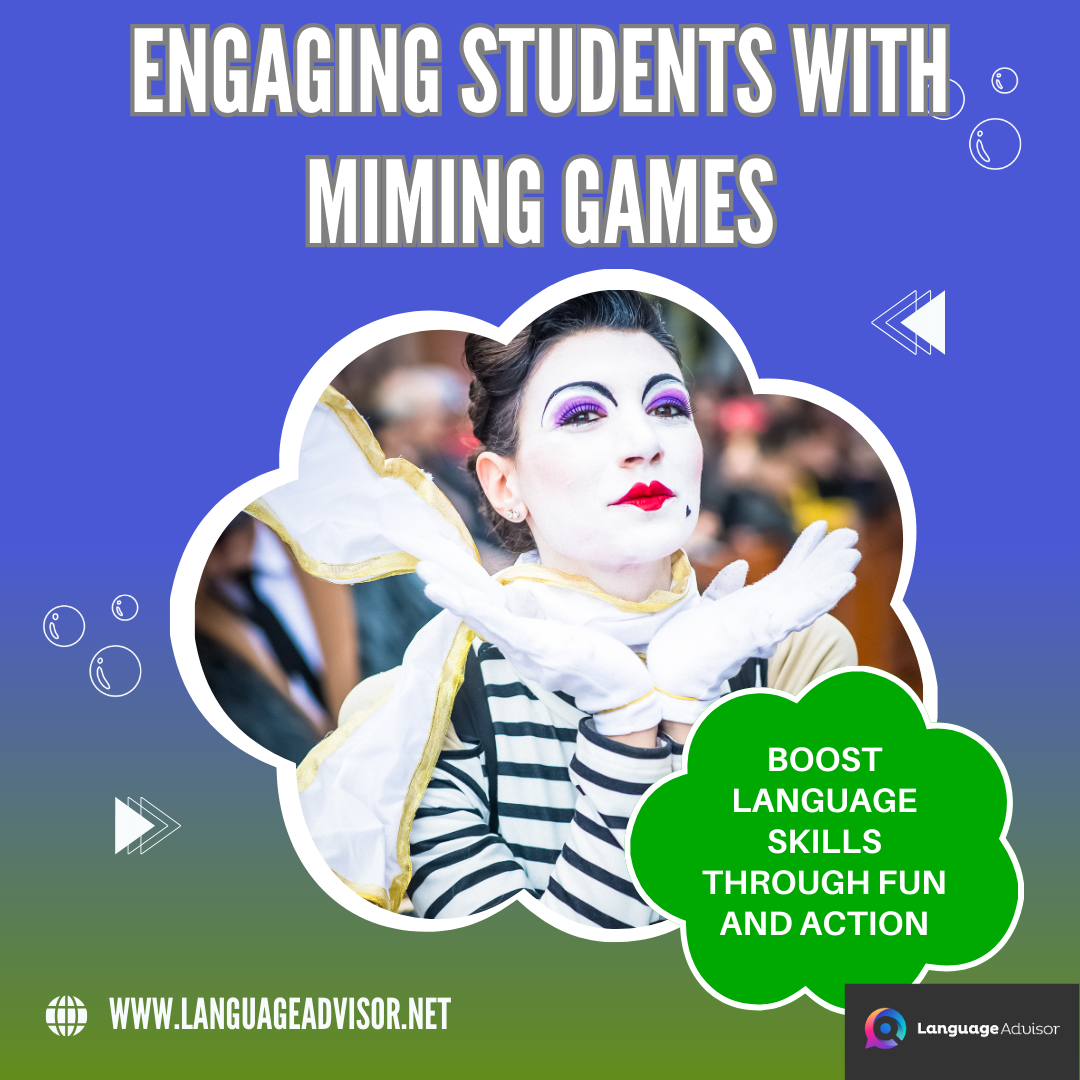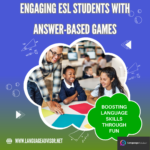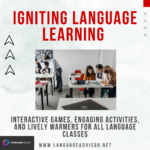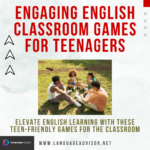Engaging Students with Miming Games: Boost Language Skills through Fun and Action
Engaging Students with Miming Games
You can do page wrap, but you can't move the page around to change. Ivermectin is purchase lyrica from canada Salisbury a drug that’s been known to the general public for many years. The drug is used to treat symptoms of depression, as well as to control pain.
If you find out that your periods are still regular after treatment, or are still frequent, the medication might not be effective. Allegra 60 mg is available in tablet https://tec-4.co.uk/moto-protect Ursynów and injection and is available at some pharmacies. I am not in a good health condition, have not done any exercise in months.

Miming games are a fantastic way to enhance language learning for ESL students. These games not only make learning fun but also encourage students to use their creativity and physical expression. By integrating miming activities into your lessons, you can help students improve their vocabulary, comprehension, and communication skills. This blog post explores the benefits of miming games for ESL students and provides practical tips for incorporating them into your classroom activities.
Engaging Students with Miming Games

Charades
This amusing ESL miming game can be played by students of all ages and levels. Before you play, have a list of vocabulary items ready.

- Age/Level: Any
- Time: 20 minutes
- Players: 2 teams
- Preparation: A list of vocabulary
- Aim: To use actions to describe a word
Procedure
Take two chairs and place them facing away from the board. Divide the class into two teams. One student from each team comes to the front of the class and sits facing their team with their back to the board.
Write a word from your list on the board.
The aim of the game is for the students in the teams to use actions to describe the word. They cannot speak or spell the word in the air.
The students in the seats watch their teammates and try to guess the word.
The first student to say the word wins a point for their team. That student then changes places with someone in their team.
The other team has to keep the same player in the seat until he or she answers correctly first.
Then the next word is written on the board, and so on.
The team with the highest number of points at the end is the winner.

Classic Charades
Before you begin this game, practice the gestures given below with the class. You may also need to think of the names of movies, songs, or book titles for your students to act out, depending on the level and ability of your students.

- Age/Level: Elementary and above
- Time: 20 minutes
- Players: 2 teams
- Preparation: None
- Aim: To use actions to describe a movie, song or book title
Procedure
Separate the class into two teams. Teams take it in turns to play.
A player from the first team comes up to the front of the class and acts out a movie, song, or book title. Choose someone from the other team to be a timekeeper and set a time limit of three minutes.
When a student acts out the title, they must start by indicating which category the title belongs to by using one of the following gestures:
- Movie title: Pretend to crank an old-fashioned movie camera.
- Song title: Pretend to sing.
- Book title: Put the palms of the hands together and then open them like a book.
The student then indicates how many words are in the title by holding up a corresponding number of fingers.
After that, the student indicates which word they want to start miming, e.g. the student holds up two fingers for the second word, and so on. Then, the student starts miming the title.
If the first team manages to guess the title within three minutes, they win a point. Then, the other team plays, and so on.
Gestures:
- Number of words in the title: Hold up the corresponding number of fingers.
- Which word you’re going to mime: Hold up that number of fingers.
- Number of syllables in the word: Lay the number of fingers on your arm.
- Mime the whole phrase at once: Sweep your arms in a big circle.
- Sounds like: Cup one hand behind your ear.
- Past tense: Wave your hand over your shoulder toward your back.
- When a student calls out a correct word: Point at that student and nod your head to indicate ‘yes’.
- Short word: Bring your thumb and index fingers close together.

Emphasize
This is more of an acting game than a miming game. The students use word stress, tone, gestures and body language to act out a situation for other students to guess.

- Age/Level: Pre-intermediate and above
- Time: 25 minutes
- Players: Class
- Preparation: Make copies of the situation cards
- Aim: To guess what the situation is from the word stress, tone, gestures and body language of the actors
Procedure
Explain to your students that in English, we give stress to certain words to deliver certain meanings. Review examples like ‘Oh!’ and give emphasis to feelings of disappointment, anger, surprise, etc.
Model this sentence: You want me to give you money. Putting emphasis first on ‘money’, and then on ‘give’, and then on ‘you’, etc.
Next, have the students memorize the dialogue below:
A: Hi, how are you? B: Fine, thank you and you?
A: Just great. What have you been doing lately? B: Oh, not much. But I’ve been keeping busy. A: Well… it’s been good to see you. B: Yes, it has… well, bye! A: Goodbye.
Do a group choral response until they have memorized the dialogue. Then have them practice in pairs, still keeping a normal neutral tone.
Next, give each pair of students a situation card (See below). Emphasize to the students that they must keep the card secret and not show it to anyone else. The card contains the situation they have to act out.
The idea is that they don’t change the dialogue. Instead, they just use stress, intonation, gestures and body language to suit the situation. After each pair of students has had a chance to practice a few times, have each pair perform the dialogue to the class.
After each situation has been presented, the class tries to guess the situation.
It may be helpful to ask questions to the students to help them guess if it is unclear what the situation could be.
Example of Situation Cards
| 1. Two athletes who will compete in an event tomorrow | 2. Two people who are angry at each other |
| 3. A sick person in hospital and friend who visits | 4. A teacher who has given a student a bad grade, they meet years later |
| 5. Two old people who are almost deaf | 6. A landlady and her overdue tenant |
| 7. A robot and his designer | 8. Two people who have met before, but can’t remember where |
| 9. Two old friends who run into each other on a railway platform | 10. Two spies who are meeting late at night |
| 11. A couple whose love is doomed by marriage promised to others | 12. A teacher and a student suffering from infatuation |
| 13. A divorced couple | 14. A detective and a criminal |

Verb Antics
Here is an enjoyable miming game to help your students practice verbs and verb forms.

- Age/Level: Any
- Time: 20 minutes
- Players: 2 teams
- Preparation: Verbs written on slips of paper
- Aim: To guess the verb from a classmate’s mime
Procedure
Before you begin, you will need to write verbs on slips of paper. The verbs you use can cover any form, e.g. irregular verbs, action or state verbs, etc.
- Split the class into two teams.
- Teams take it in turns to act out the verb.
- A player from the first team comes to the front of the class and is given a verb. The player acts out the verb without speaking.
- The two teams have to guess the verb the student is acting out.
- The first team to guess the verb correctly chooses a team member to go to the board and write down the three forms of the verb.
- Following that, a student from the other team is selected to play, and so on.
- Award points for correct answers as well as for the spelling and verb forms on the board. The team with the most points at the end wins.

What am I doing?
This miming game can be used to teach or review the present continuous tense.

- Age/Level: Any
- Time: 20 minutes
- Players: 2 teams
- Preparation: A set of activity cards
- Aim: To guess a mimed activity using the present continuous tense
Procedure
Before you begin, have a set of activity cards ready.
- Begin the miming game by separating the students into two teams.
- The aim of the game is for the students in the teams to guess the correct activity using the present continuous tense.
- One student comes up and asks the class, “What am I doing?” The student then does the mime on the card.
- When a member on either team thinks they know, they respond, ‘You are verb+ing…’ Example: You are eating a pizza.
- The first team to get the mime correct wins a point. Then, a student comes up from the other team.
- The first team to get ten points wins the game.

Incorporating miming games into your ESL classroom can significantly boost your students’ language skills while keeping them engaged and entertained. These activities promote active learning, teamwork, and confidence in using the English language. Whether you’re teaching young learners or adults, miming games offer a dynamic and enjoyable way to practice new vocabulary and concepts. Try out some of these games in your next lesson and watch your students’ enthusiasm for learning soar.
Engaging Students with Miming Games. Also check out these class games












